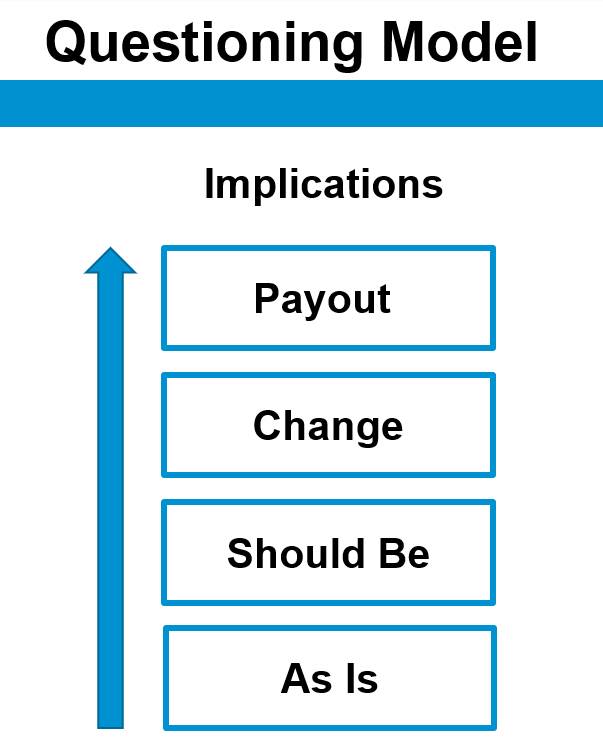Collaborate with the Customer
Learning Objectives
After completing this unit, you’ll be able to:
- Explain the difference between clarifying and confirming questions.
- Apply the types of questions in the Questioning Model to determine the needs of the customer.
Collaborate and Determine Need
In the previous unit, you worked on connecting with prospective customers and decision makers within an organization. Connecting with the customer is the first phase of the Dale Carnegie Sales Model. The second phase is Collaborate. It’s built upon the Dale Carnegie Principle: “Try honestly to see things from the other person’s point of view.” How do you see things from their point of view? You ask questions.
This is sometimes difficult for a salesperson to do—putting yourself in the customer’s shoes. But the sale takes place in the customer’s mind. Asking the right questions and listening gets you closer to what’s going on in their mind. So it’s a good rule to let the customer do 80% of the talking. But first, you need to get to the meeting.
Set an Agenda
How many of us have an agenda when we walk into a customer meeting? The Agenda Statement is a multi-purpose tool that enables the seller and customer to collaborate on the agenda before or during the meeting so both parties are aligned. It's about the customer maintaining a sense of control, while the seller can still influence the direction of the conversation. The Agenda Statement:
- Gets them saying “yes, yes” (more about that later).
- Generates interest about the meeting.
- Makes the customer less likely to cancel the meeting.
- Helps get the right people in the room.
- Transitions smoothly into asking questions.
- Is about the customer, not the seller.
The statement itself is made of three parts.
Buyer Benefit—Simple statement that highlights the benefits of the meeting for the customer
Agenda—Basic overview of the areas we will cover
Question to Proceed—Example: “In addition, are there other topics you would add to this agenda?”
Use Questions Strategically
There are two key types of questions that enhance the effectiveness of questioning. Clarifying questions encourage the customer to elaborate on their responses. Confirming questions enables you to “rewind” and affirm your understanding. Here are some examples.
Clarifying Questions
- In what regard?
- How so?
- Tell me more...
- How do you mean?
- Oh?
- Tell me why…
- That word has so many different meanings. What does it mean to you?
Confirming Questions which can usually end with, "Is that right?"
- What I’m hearing you say is…
- Let me test my understanding…
- It sounds like…
- It seems to me…
- As I understand it, you…
Asking the right questions is challenging. You must learn to ask questions that home in on the customer’s needs and wants. Good questions also uncover the emotions and reasons behind the facts.
Questioning should also lead you to better determine what your customer needs. Uncovering the customer’s needs is covered in detail in the Winning with Relationship Selling course as you look at the Needs Analysis, the Customer’s Gap, and the Questioning Model.
Here, we focus on the Questioning Model.
Get to Know the Questioning Model
This model helps you draw out the needs of the customer by focusing on As Is, Should Be, Change, and Payout questions.

Remember that this model is flexible. Sometimes it is best to start with the Should Be rather than the As Is, such as when the As Is situation is not an issue. Base your questions on the customer's response.
Try It for Yourself
In the Resource section, we’ve provided you with a Question Planning Worksheet you can use to practice developing questions and diving into your customer’s needs. Feel free to practice with a colleague or someone who can provide you feedback.
In the next unit, we take a look at the third phase of the Dale Carnegie Sales Model, Create!
